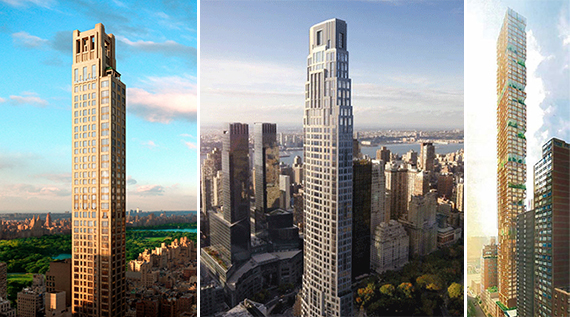Trending
 “Investing before the ‘all clear’ sign”: Jon Gray on Blackstone’s $10B apartment deal
“Investing before the ‘all clear’ sign”: Jon Gray on Blackstone’s $10B apartment deal Lawmakers reach sweeping housing deal with “good cause eviction,” new 421a
Lawmakers reach sweeping housing deal with “good cause eviction,” new 421a Macerich faces “imminent” default on $300M Santa Monica Place loan
Macerich faces “imminent” default on $300M Santa Monica Place loan Tony Park and Elad Dror take a gamble on Koreatown office-to-resi conversion
Tony Park and Elad Dror take a gamble on Koreatown office-to-resi conversionHere’s a little trick that developers use to build taller towers
Locating mechanical space on lower floors allows more units higher up

Developers have realized that mechanical space – once considered a necessary evil – can significantly raise the value of buildings when placed strategically.
By increasing the height of mechanical floors – which house the building’s heating, cooling, electrical, ventilation and other systems – and placing them at the bottom of the building, developers are able to build more residential units at higher elevations, which command a premium price.
Vornado Realty Trust deployed the tactic at its 950-foot-tall luxury tower at 220 Central Park South. A full six of the building’s lower floors are given over to mechanical uses, with ceiling heights between 18 to 24 feet. In total, the gambit allowed Vornado to add 100 feet to the tower, Crain’s reported.
Bauhouse Group’s Joseph Beninati, which is looking to build an 80-story condominium tower at 3 Sutton Place, told Crain’s he planned to build 24-foot mechanical floors.
“Higher floors are more valuable,” Beninati said. “It’s a bedrock rule of real estate.”
That’s double the height of most of the building’s residential floors. The trick will add 100 feet or more to the tower’s total height, Beninati estimated to Crain’s. The firm is moving ahead with construction on the project, though it’s reportedly yet to secure financing for it.
“In general, a floor premium, controlling for other factors such as view, is 0.5% to 2%,” Corcoran Sunshine’s vice president of research Ryan Schleis told Crain’s.
Back in September, The Real Deal wrote about another trick developers were employing to maximize space: buildings that widen as they rise, creating an inverted pyramid. [Crain’s] – Ariel Stulberg
